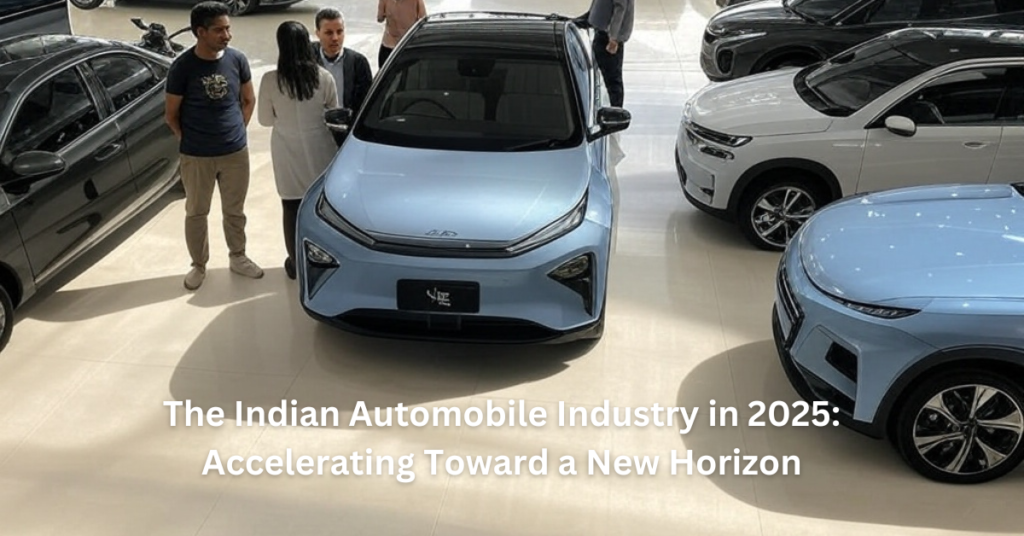
#LeoStylo #Lz6
The Indian Automobile Industry in 2025: Accelerating Toward a New Horizon
India’s automobile industry is at a pivotal moment in 2025, fueled by a potent mix of electric vehicle (EV) momentum, evolving consumer preferences, and a push for sustainability. As one of the world’s fastest-growing auto markets, valued at over $100 billion, the sector is not just keeping pace—it’s setting the stage for a transformative decade. Here’s what’s driving the wheels in India right now.
The Electric Surge Gains Speed
EVs are no longer a niche conversation in India—they’re a mainstream movement. With the government’s ambitious target of 30% EV penetration by 2030, 2025 is proving to be a breakout year. Tata Motors continues to lead the charge, with its Nexon EV and newly teased models dominating the electric passenger vehicle space. Ola Electric, meanwhile, is rewriting the two-wheeler game, hitting over 99,000 electric scooter sales in 2024 and aiming higher this year with its revamped S1 lineup.
Global players are jumping in too. Tesla’s much-anticipated entry is heating up, with plans for a Mumbai showroom in the upscale BKC area and talks of reduced import taxes to make its cars more accessible. BYD and Hyundai are also doubling down, eyeing India as a key growth market for their EV portfolios. The push isn’t just about sales—charging infrastructure is expanding, with over 10,000 public stations now operational, thanks to initiatives like the Electric Mobility Promotion Scheme.
Price Hikes Loom Large
Come April 2025, car buyers might feel a pinch. Major manufacturers like Maruti Suzuki, Tata Motors, and Mahindra have announced price hikes of up to 4% across their lineups, citing rising input costs and supply chain pressures. Steel, aluminum, and semiconductor prices are the culprits, compounded by global trade uncertainties like U.S. tariff threats. For consumers, this could mean a Tata Punch or Maruti Dzire costing a few lakhs more—but it’s also pushing brands to innovate with cost-effective tech and trims.
SUVs and Premium Picks Dominate
The Indian buyer’s love affair with SUVs shows no signs of slowing. From the compact Mahindra XUV700 Ebony Edition to the luxe Toyota Hilux Black Edition, SUVs are ruling the roads. This year, they’re expected to account for over 50% of passenger vehicle sales, up from 48% in 2024. Why? Bigger is better for India’s diverse terrains, and buyers want the status that comes with it.
Luxury is also on the rise. South India, especially Tamil Nadu, saw a 19.3% jump in premium car registrations in 2024, with brands like BMW and Mercedes-Benz rolling out electric and hybrid variants to cash in. Bentley’s one-off Batur and Lexus’ new RZ BEV are turning heads among the elite, signaling a shift toward high-end, eco-conscious rides.
Two-Wheelers: Electric and Beyond
Two-wheelers remain the backbone of Indian mobility, and 2025 is electrifying the segment. Suzuki Motorcycle India crossed 10 lakh units in FY 2024-25, with its electric offerings gaining traction alongside petrol-powered stalwarts like the Panigale V4. Yamaha’s FZ-S Fi Hybrid, launched at ₹1,44,800, blends tech with practicality, appealing to urban riders. Meanwhile, TVS and Bajaj are neck-and-neck with Hero MotoCorp, each pushing past 10,000 EV units monthly.
Challenges on the Horizon
It’s not all smooth driving. Retail sales dipped 7% in February 2025, per FADA, hinting at softening demand after a festive high. Dealer inventories are stabilizing at 50-55 days, but two-wheeler financiers are tightening loans as defaults creep up. U.S. tariffs could also hit exports of iPhones and auto parts made in India, indirectly squeezing component makers.
Innovation and Adaptation
Amid these shifts, innovation is thriving. Ashok Leyland’s ‘Saathi’ LCV debuted at Auto Expo 2025, targeting last-mile delivery with a low-cost, high-efficiency design. Ford’s return (sans car manufacturing) and Volkswagen’s Polo revival talks show legacy brands adapting to India’s quirks. Meanwhile, Skoda Auto VW is in discussions with JSW and Tata for an e-car partnership, hinting at a collaborative future.
The Road Ahead
India’s auto industry in 2025 is a blend of ambition and reality. EVs are charging ahead, but petrol and diesel aren’t out yet—diesel’s resilience in commercial vehicles proves it. With a projected 2% growth in passenger vehicle dispatches this year (SIAM), the sector’s resilience shines. Add in a $100 billion export target for auto components by 2030, and India’s gearing up to be a global hub.
For buyers, it’s a thrilling yet pricey time to shop. For manufacturers, it’s a race to innovate, electrify, and localize. One thing’s clear: the Indian automobile story is accelerating, and 2025 is just the starting line.
